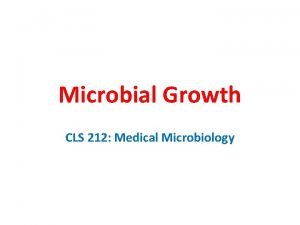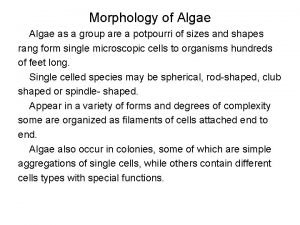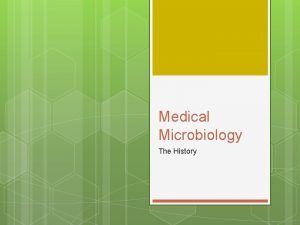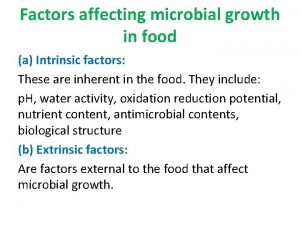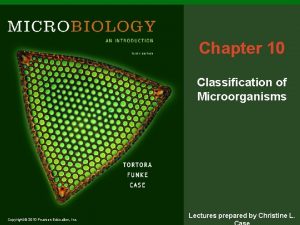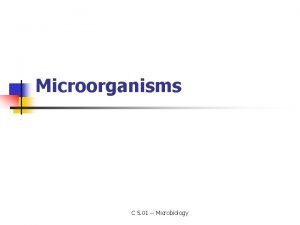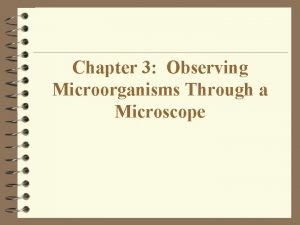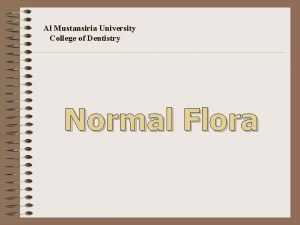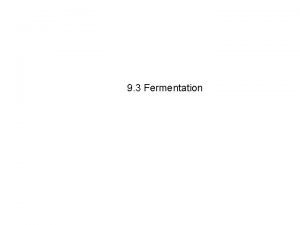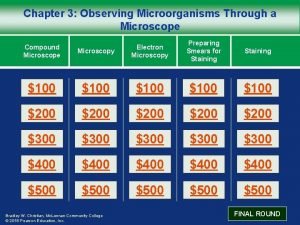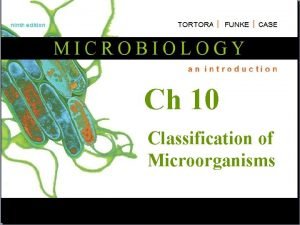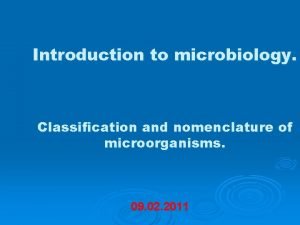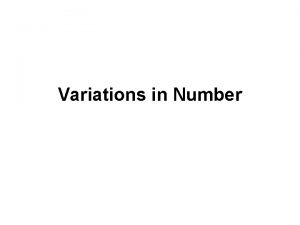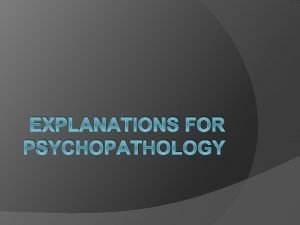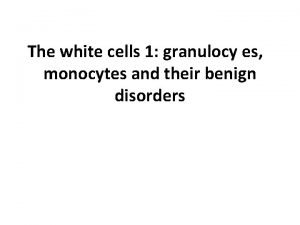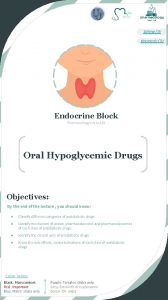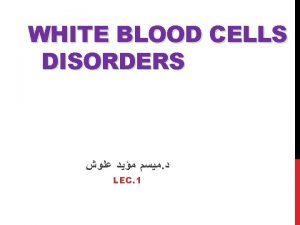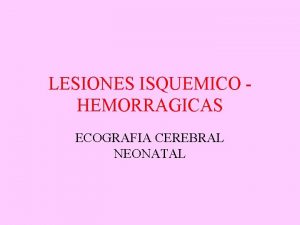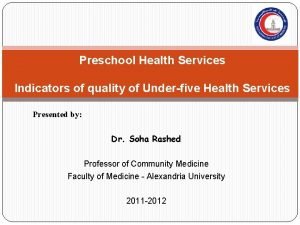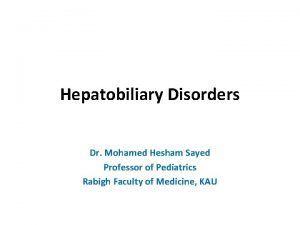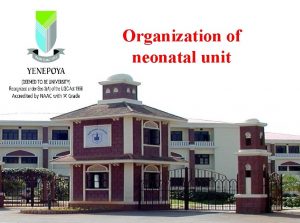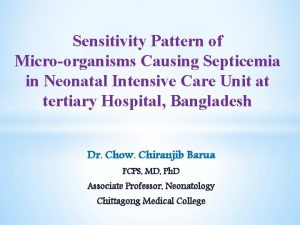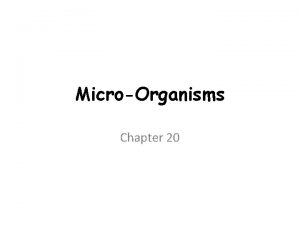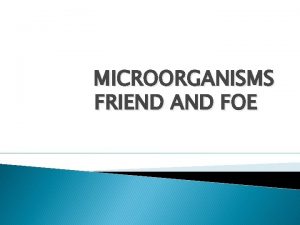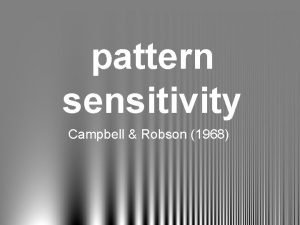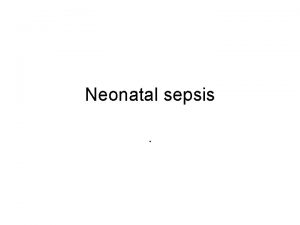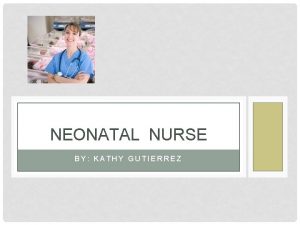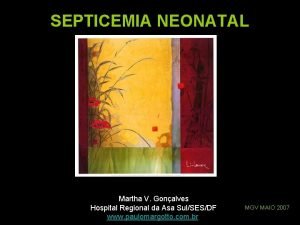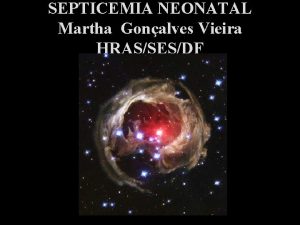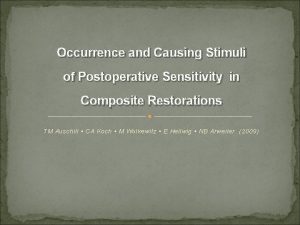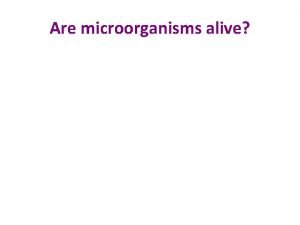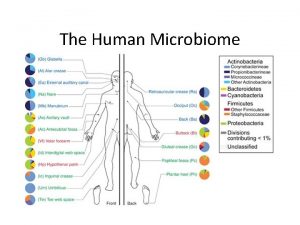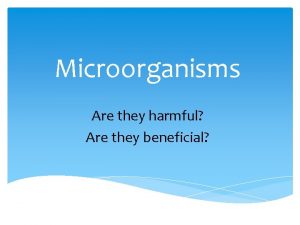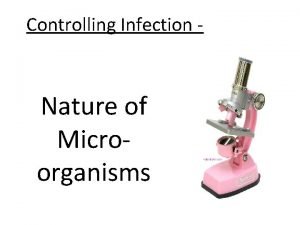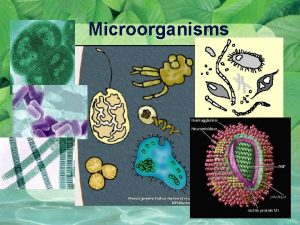Sensitivity Pattern of Microorganisms Causing Septicemia in Neonatal


















































- Slides: 50

Sensitivity Pattern of Micro-organisms Causing Septicemia in Neonatal Intensive Care Unit at tertiary Hospital, Bangladesh Dr. Chow. Chiranjib Barua FCPS, MD, Ph. D Associate Professor, Neonatology Chittagong Medical College




Background ØNeonatal septicemia is a clinical syndrome of systemic illness accompanied by bacteremia occurring in the first 28 days of life. ØIt may occur through transplacental infection or an ascending infection from mother’s genitourinary tract and from the infected caregiver or nosocomial infection. Ref: Gotoff SP. Infection of neonatal infant, 2000.

Background ØThe incidence of neonatal sepsis is 5 to 8 per 1000 birth, the highest rates occur in LBW, perinatal asphyxia, maternal infection and babies with congenital abnormalities. ØIn global perspective the microorganisms most commonly associated with early onset of infection include group B Streptococci, Escherichia coli, Heomophilus influenzae, Listeria monocytogenes. Ref: Mery Health, 2009 TC. Neonatal sepsis. National Institute of

Background ØOrganisms that have been implicated in causing late onset sepsis include coagulasenegative Staphylococci, Staphylococci aureus, E. coli, Klebsiella, Pseudomonas, Enterobacter, Candida, Streptococcus anaerobes and non typable H. influenzae.

Background ØCulture positive neonatal sepsis in the USA is 0. 98% but in very low birth weight infants under prolonged intensive care the rate of culture proven sepsis may be high as 30%. ØNeonatal sepsis is one of the commonest cause of perinatal mortality in the developing world. Ref: Stoll BJ, Hansen NI, Sanchjez PJ, et al: Early onset neonatal sepsis. Pediatrics, 2011.

Background ØMortality rate of early onset neonatal sepsis is 2 to 40% and late onset neonatal sepsis is 2 to 20% (Mery 2009). ØDefinitive diagnosis of neonatal sepsis is based on positive blood or cerebrospinal fluid (CSF) culture, which both take at least 24 to 48 hours and are often falsely negative.

Background ØDue to irrational use of antibiotics sensitivity pattern of microbes are also changed. In many situations, conventional antibiotics are not sensitive to causative micro-organisms.

Objectives of the study ü To identify the causative organisms causing neonatal septicemia. üTo detect culture-sensitivity of the microorganisms.

Inclusion Criteria 1) Term & preterm babies, irrespective of sex and weight. 2) Clinically diagnosed septicemic patient were only included in this study 3) Patient under antibiotic treatment & also without prior antibiotic therapy included in this study.

Exclusion Criteria 1) Severe perinatal asphyxia 2) Neonate with congenital anomalies 3) Extremely low birth weight neonates.

Methodology ØThis is a hospital based prospective longitudinal study. ØPlace of study: SCANU, Chittagong Medical college Hospital, Bangladesh. ØDuration of the study : January 2013 to July 2014. ØSample Size : 300 ØBlood culture was done in Bac T/Alerd 3 D system and culture incubated in FAN.

Methods v. For every case 2 ml of venous blood was collected from a peripheral vein under aseptic condition and introduced into aerobic and anaerobic media. The blood culture specimens were sent and processed accordingly bac T/alert 3 D system in Microbiology laboratory. v Sensitivity of the bacterial isolates to different antibiotics was determined using Kirby Baurer disk diffusion method.

Significant characteristic finding of neonatal septicemia clinically observed 100% 90% 80% 70% 60% 50% 40% 30% 20% 10% 0% 70% 52% 38% n 11% nv ul sio a Co re m Sc le ia th er m gy Hy po Le th ar n st Di om in al o Ab d an t. T en sio ng Fe ed i re ss st Di ct ry to 43% 18% Re lu ira sp Re 45%

Statistical Profile Of Admitted Cases in SCANU, 2013

Statistical Profile Of Admitted Cases in SCANU, 2013

Statistical Profile Of Admitted Cases in SCANU, 2014

Statistical Profile Of Admitted Cases In SCANU, 2014

NICU In CMCH

Results


Distribution of birth weight in study cases 22. 00% 48. 00% 1000 - <1500 gm 1500 - <2500 gm ≥ 2500 gm 30. 00%

Association between sex and sepsis in relation to birth weight >2500 g Male <2500 g <1500 g 52 (57. 8%) 35 (53. 0%) 76 (52. 8%) Female 38 (42. 2%) 31 (47. 0%) 68 (47. 2%) Early onset sepsis (EONS) 38 (42. 2%) 45 (68. 2%) 124 (86. 1%) Late onset sepsis (LONS) 52 (57. 8%) 21 (31. 8%) 20 (13. 9%) * Chi-square test significance P = 0. 735 NS* P = 0. 000 HS*

Distribution of causative organisms according to onset of sepsis Early onset sepsis Klebsiella (54. 17%) Pseudom onas (16. 67%) Acinetoba S. Aureus ctor (6. 25%) (14. 58%) E. Coli (6. 25%) E. Coli with coliform (2. 05%) 39. 07% 13. 27% 5. 08% 2. 00% 5. 10% 0. 00% 3. 40% 9. 50% 4. 25% 1. 15% 2. 08% Late onset 15. 10% sepsis

Culture Pattern Of Study Cases 96 Culture Positive Culture Negative 204 32% cases were culture positive. 68% cases were culture negative, which were clinically sepsis.

Detected culture positive organisms in study cases 16. 67% 14. 58% 54. 17% 6. 25% 2. 08% Klebsiella Pseudomonas Acinetobactor S. Aureus E. Coli with Coliform

Growth of Klebsiella spp. on Macconkey agar media Growth of Pseudomonas spp. on Muller Hinton agar media Growth of Acinetobacter spp. on Mac. Conkey agar media

Growth of E. coli on Macconkey agar media Growrth of Staph. aureus on blood agar media

Culture sensitivity of Klebsiella Piperaciline 42% Co-trimoxazole 50% Levofloxacin 50% Ceftazidim 38% Cefotaxim 40% Meropenem 45% Imipenem 65% Ciprofloxacin 78% 0% 20% 40% 60% 80% 100%

Culture Sensitivity to Pseudomonas 100% 80% 72% 69% 60% 45% 50% 41% 40% 41% 20% op ct ba +S ul er az in Ce f am m di zi ta ax im ot Ce f n ci xa flo ro Ci p ip Im Am ik a ci n en em 0%

Culture sensitivity of Acinebactor 100% 90% 80% 70% 60% 50% 40% 30% 20% 10% 0% 81% 65% ic in ilm Ne t Ci p ro flo xa ci n em en er M 60% 55% op ip Im Am ik a ci n en em 58%

Culture sensitivity of Staph. Aureus 100% 90% 80% 70% 60% 50% 40% 30% 20% 10% 0% 83% 60% 55% 48% 40% n yc i in in da m ic Cl am Ge nt of lo xa ci n em pr Ci ip Im op er M en em en ac ik Am m yc i n in 30% nc o Va 58%

Culture sensitivity of E. Coli 100% 90% 80% 70% 60% 50% 40% 30% 20% 10% 0% 81% 75% 55% Amikacin Ciprofloxacin Ceftazidim

Detected antibiotics sensitive to isolated micro-organisms Amikacin Cefotaxim Ciprofloxacin Levofloxacin Imipenem Meropenem Vancomycin Netilmicin Tazobactum Piperacilin Ceftadizim Cefoperazone Cotrimoxazole Azithromycin Sulbactum

ØKlebsiella pneumonia(50%), Staphylococcus Aureus (21%) were predominant microbes. Ø Antibiotics sensitive to Klebsiella pneumoniae were Ciprofloxacin(88. 8%), pefloxacin (97. 7%), Staphylococcus Aureus most sensitive to Ciprofloxacin(99. 9), Pefloxacin(80. 0%) and Cloxacillin (15. 8%). ØFound low incidence Group B Streptococcus. Ref. West B A, Peterside O. Sensitivity pattern among bacteria isolates in neonatal sepicemia in port Hurcourt, Nigeria, 2012.

*Staphylococcus(44. 3%), Klebsiella(10. 5%), Enterobactor(8. 2%), Fungal infection(19. 2%) were common organisms of neonatal sepsis. *Staphylococcus sensitive to Vancomycin, Klebsiella pneumoniae sensitive to Carbapenem, Quinolones. Mehmet Y et al. Neonatal nosocomial sepsis in a level III NICU: evaluation of the causative agents and antimicrobial susceptibilities. The Turkish Journal of pediatrics, 2006; 48: 13 -18.

ØE. Coli & Klebsiella pneumoniae were predominant isolates caused neonatal sepsis. ØE. Coli showed susceptibility to clindamycin(98. 88%), Meropenem (90. 78%) ØMost of all gm negative isolates show susceptibility to amikacin, Imipenem and combined drugs piperacillin/Tazobactum. ØStaphylococcus aureus sensitive to Vancomycin. Ref: Shah M, Desai p. Current scenario of antimicrobial resistance in NICUS: An emerging therapeutic confront. International J. Analytical, phar. & biomedical sciences , 2013

*Blood culture yielded bacterial growth 28. 8% cases *Common organisms were isolated were Klebsiella followed by Pseudomonas. *Higher resistance to the commonly used 1 st line antibiotics Ampicillin and Gentamycin. Ref: Ramesh B Y, Lincy P B (India). Journal of clinical and Diagnostic Research, 2011, vol. 5

*In neonatal sepsis gram negative organisms were the most common pathogens identified(80%), Klebsiella(35%), Pseudomonas(20%), and Enterobactor(10%). *Gram positive organisms were Staphylococcus 10% and GBS 10%. Ref: Samia B, Iman S, Gams LS et al. Journal of American Science, 2011, 7(7).

v. In neonatal septicemia 32. 72% were culture positive. Common bacteria isolated were Klebsiella spp. , E. Coli and Strap. Aureus. v. Group B streptococcus not isolated. v. Antibiotics effective gm negative bacilli were cefaperazone/sulbactum and piperacillin/tazobactum. v. Methicillin resistant Staph. Aureus isolated were 57%. Ref: Agarwal A, Bhat S. Clinicobiological study of neonatal sepsis. Journal of International Medicine and Dentistry, 2015, 2(1): 22 -29

*WHO and also in text book recommendation of empirical treatment of neonatal sepsis is Ampicillin & Gentamycin. *In rural India, where Gm. negative organisms were the main causes of neonatal sepsis & almost 100% resistance to conventional Ampicillin and Gentamycin. Ref: Viswanathan R, Singh AK, Gosh C et al. Profile of Neonatal septicimia at adistrict level sick newborncare unit. Journal Health popul. Nutri, 2012

Conclusion Ø In this study, common organism causing neonatal septicemia in our region are Klebsiella, Pseudomonas, Acinetobactor, S. Aureus, E. Coli and coliform organisms. Ø Group B Streptococcus not isolated in any culture Ø Most of the culture positive organisms conventional Ampicillin, Gentamycin. resistant to

Mostly Common antibiotics sensitive to isolated micro-organisms Meropenem Ciprofloxacin Imipenem Levofloxacin Amikacin Ceftazidim Vancomycin

Recommendation ØMulti-centre broad-based study for blood culture sensitivity are essential to guide antibiotic regime for neonatal septicemia in developing and developed countries.

Bay of Bengal

Longest Sea-Beach in the World

Cox’s Bazar, Bangladesh

 Microorganisms wanted poster
Microorganisms wanted poster Factors affecting growth of microbes
Factors affecting growth of microbes Flora ir fauna
Flora ir fauna Physiology of microorganisms
Physiology of microorganisms Microorganisms 5th grade
Microorganisms 5th grade Nutritional requirements of microorganisms
Nutritional requirements of microorganisms Harmful microorganisms
Harmful microorganisms History of microbiology
History of microbiology Extrinsic factors affecting microbial growth
Extrinsic factors affecting microbial growth Tuberclerosis
Tuberclerosis Classification of microorganisms
Classification of microorganisms Types of fermentation
Types of fermentation Major groups of microorganisms
Major groups of microorganisms Harmful microorganisms
Harmful microorganisms Learning objectives of microorganisms
Learning objectives of microorganisms Classification of microorganisms
Classification of microorganisms Observing microorganisms through a microscope
Observing microorganisms through a microscope Microorganisms species
Microorganisms species Learning objectives of microorganisms
Learning objectives of microorganisms Flora
Flora Fermentation in microorganisms
Fermentation in microorganisms Oil palm
Oil palm The five i's of studying microorganisms
The five i's of studying microorganisms What is the microorganisms
What is the microorganisms Observing microorganisms through a microscope
Observing microorganisms through a microscope Microorganisms meaning
Microorganisms meaning Microorganism wanted poster
Microorganism wanted poster Microorganisms importance
Microorganisms importance Emotional barriers to communication
Emotional barriers to communication Drugs causing leukocytosis
Drugs causing leukocytosis The act of causing people to do or believe something
The act of causing people to do or believe something Forces causing movement grade 3
Forces causing movement grade 3 The supernatural tradition
The supernatural tradition Drugs causing leukocytosis
Drugs causing leukocytosis Antidiabetic drugs mnemonics
Antidiabetic drugs mnemonics Climate change causing droughts
Climate change causing droughts The chance of injuring people or causing damage
The chance of injuring people or causing damage Baghouse filter diagram
Baghouse filter diagram Being legally responsible for causing harm is:
Being legally responsible for causing harm is: Drugs causing leukocytosis
Drugs causing leukocytosis The bone is bent and splits causing an incomplete break.
The bone is bent and splits causing an incomplete break. Vasculopatia lenticuloestriada neonatal
Vasculopatia lenticuloestriada neonatal Infant mortality rate formula
Infant mortality rate formula Hiperbilirrubinemia mixta
Hiperbilirrubinemia mixta Yorkshire and humber neonatal network
Yorkshire and humber neonatal network Necrotizing enterocolitis symptoms
Necrotizing enterocolitis symptoms Neonatal liver failure
Neonatal liver failure Circulação neonatal
Circulação neonatal Death rate formula
Death rate formula Neonatal bradycardia algorithm
Neonatal bradycardia algorithm Organization of neonatal unit
Organization of neonatal unit

